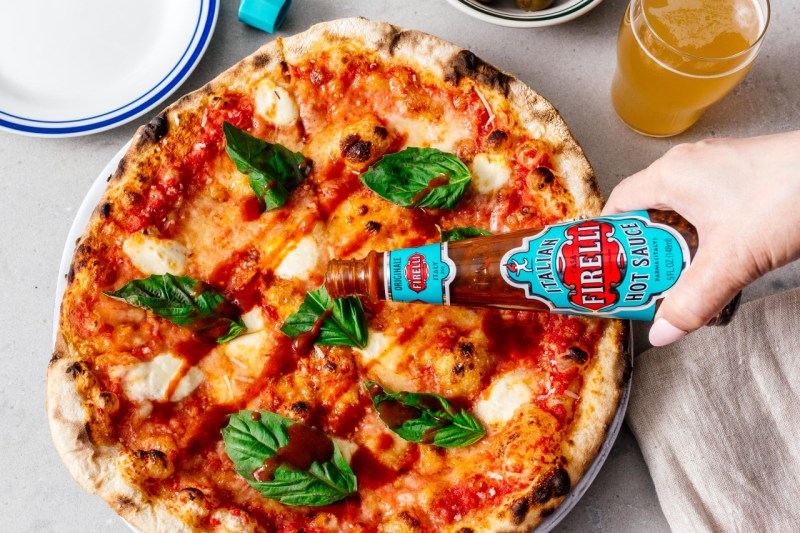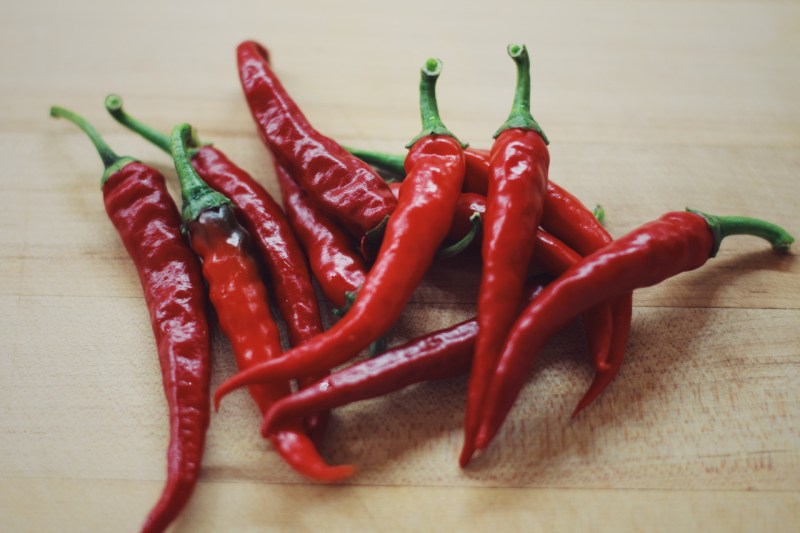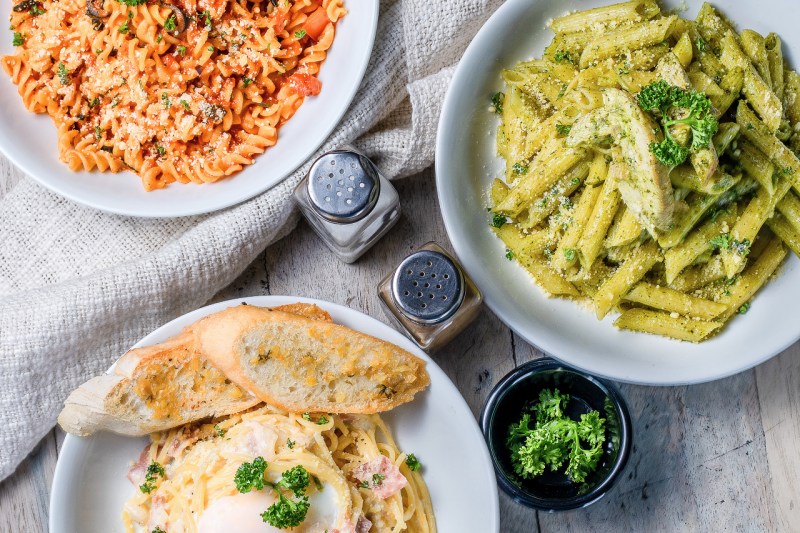While Italian cuisine is infamous worldwide for its al-dente pasta and colorful Neapolitan pizzas, one item it isn’t known for is hot sauce. With the exception of red pepper flakes and the occasional chili oil, spicy condiments rarely make an appearance in Italian food. One company is trying to change that dynamic — Firelli, an all-natural hot sauce from Parma, Italy. Not only is this hot sauce inspired by both Italian cuisine and history, but it’s also the first brand of bottled Italian hot sauce in the world.

Related Guides
- The 10 Best Hot Sauces to Spice Up Your Life
- How To Make a Soft, Chewy Neapolitan-Style Pizza Like a Pro
- 5 Classic Italian Pasta Recipes to Make at Home
A Sauce with History
Although hot sauce might be a rare condiment in modern Italian cuisine, versions of it did appear in the past. Historically, chili peppers arrived in Italy in the 15th century from the Americas. Initially, chili peppers like the peperoncino (red chili pepper) were used for decorations and not for eating. Eventually, curious Italian chefs started to experiment with the fiery ingredient, producing a series of sauces and relishes. One of the earliest surviving recipes dates back to a 1694 cookbook written by Italian cook Antonio Latini. He called this recipe salsa alla spagnola and it featured a mixture of chopped pepperoncini, tomatoes, and onions combined with peppermint, salt, and oil. Another recipe, called salsa al tornagusto appeared in the 1781 cookbook Cibo Pitogorico and was made from a blend of chili, garlic, vinegar, herbs, and spices.
The Origins of Firelli Sauce

Like many hot sauces, Firelli is great on a variety of items from seafood to pasta. But the creation of this hot sauce actually stemmed from an observation on pizza, particularly American pizza.
“In every pizzeria (basic, traditional, modern, fancy, etc.), there was always an offering of chili flakes, chili oil, chili paste, or something similar,” said Elwyn Gladstone, founder of Firelli. “The thought was, Italians make jarred pasta sauce, pizza sauce, etc, so why not create a new kind of sauce?”
Handcrafted in Parma, Italy by the Agrimonti family, Firelli hot sauce is proudly made from Italian ingredients that are also non-GMO, vegetarian, and vegan. “Our goal was to create a completely new hot sauce with great, authentic Italian ingredients, design, flavor, and flair,” said Gladstone. But despite being made in Italy, Firelli hot sauce was first launched in America. There’s a reason for this strategy. Before they created their own hot sauce brand, the founders of Firelli previously worked at a large company that sold a great deal of hot sauce. During their time at this company, they noticed from their market research that Americans often put hot sauce on pizza. With that fact in mind, Firelli decided to take advantage of that culinary trend and launch first in America. Currently, the sauce has expanded its global reach and is now also available in the United Kingdom, China, Norway, Germany, Portugal, Spain, Russia, Peru, and Chile.
How to Use Firelli Hot Sauce

So how does Firelli stack up as a hot sauce? First, let’s dissect the spice level. Instead of fiery intensity, Firelli Italian hot sauce has a gentle heat, accented by the naturally fruity flavor of its chili base — the Calabrian pepper. While this homegrown Italian pepper is hot, it doesn’t have the same level of spice as habanero or Thai bird’s eye chili, two common ingredients in other types of hot sauces. Rather, Firelli hot sauce is fruity, sweet, and slightly tart, with lingering notes of heat. These layered notes of flavors are achieved by the uniquely Italian additions of porcini mushrooms, roasted red peppers, and sea salt. Simply put, Firelli doesn’t taste like most hot sauces, which are usually brightly spicy or sharp with the acidity of the vinegar. In some ways, Firelli tastes like a spicier, richer tomato sauce.
For those looking for extreme spice, this hot sauce won’t satisfy that craving. In our opinion, unlike some other hot sauces that can be used for cooking (Huy Fong sriracha or a peri peri sauce for instance), Firelli hot sauce’s rather subtle spice would get lost in the cooking process. Instead, the best way to use this sauce is on cooked foods. Of course, being that Firelli hot sauce was originally inspired by pizza, Firelli recommends putting a dash or two on a slice. “We talk pizza because it gets people used to the idea quite quickly — that the sauce comes from Italy and that it’s a very common meal in America,” said Gladstone. Firelli hot sauce can be used on both American-style pizza or traditional Italian styles pizza like Neapolitan or Roman.
Beyond pizza, Firelli hot sauce is also great on a variety of foods, including meat, oysters, avocado toast, Bloody Mary cocktails, and sandwiches. It’s also delicious on pasta like spaghetti bolognese or a creamy carbonara. Hot sauce and eggs are a classic combination and since Firelli also has notes of tomato flavor, this sauce is perfect for any breakfast egg dish. In our opinion, although Firelli hot sauce isn’t overly spicy, it’s best used in subtle amounts to avoid overpowering the flavor of the dish itself.
It might seem strange that such a diverse condiment as hot sauce isn’t a larger part of modern Italian cuisine. Firelli is the first bottled brand of hot sauce to come from Italy. For this conundrum, Firelli has a simple answer. “We think it’s as simple as the fact that nobody has ever thought of it,” said Gladstone.



